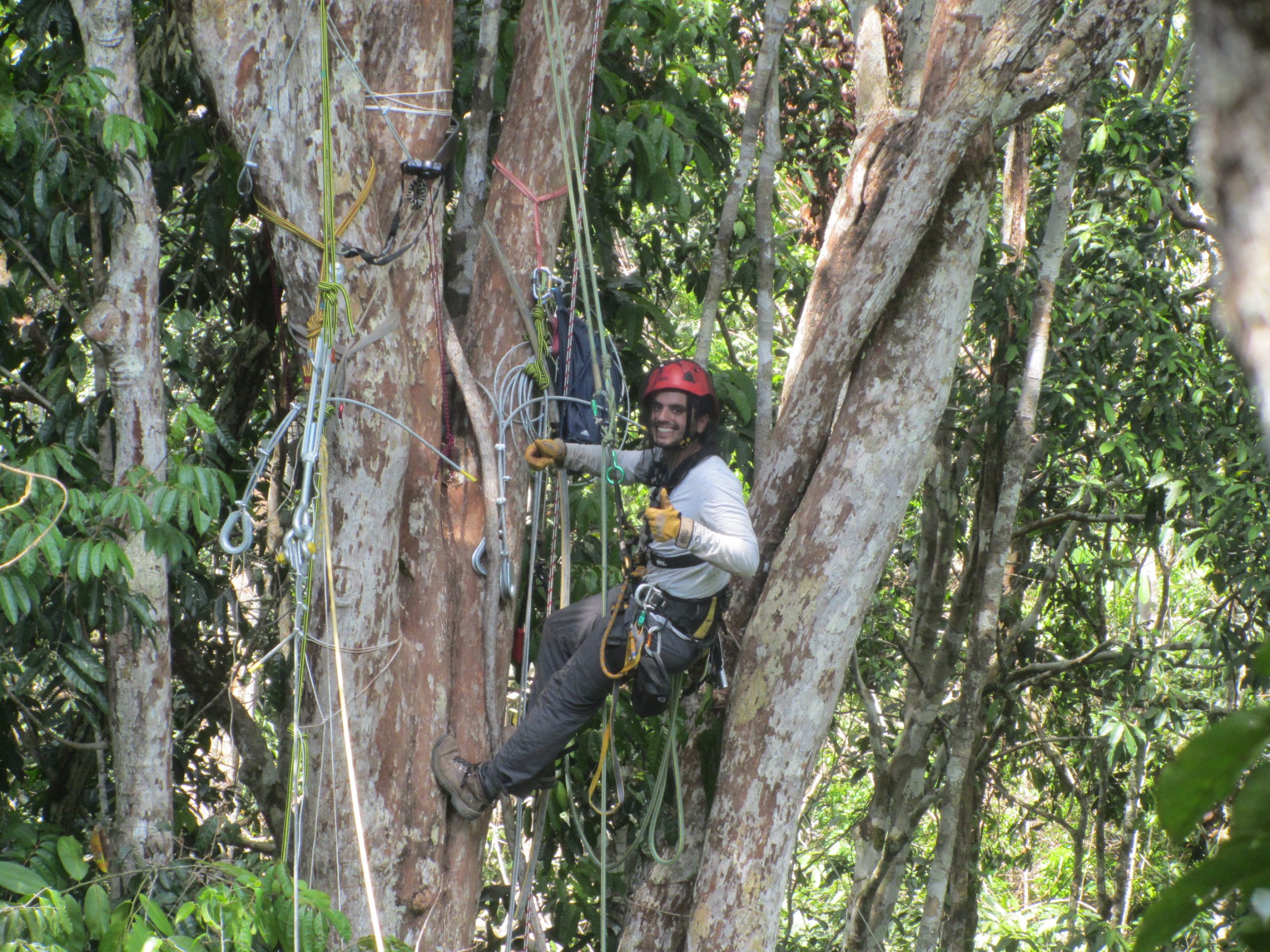
Hello everyone, my name is Pedro.
I am a biologist and a lover of the world of plants. I first realized this during my undergrad. As an intern at the Institute of Botany of São Paulo, I participated in an ozone bio-monitoring project. Basically, it was all about exposing sensitive plants to this pollutant, ozone, in several locations around an oil refinery. After a few days of exposure, I looked at the leaves and checked if and to what degree they have injured due to the ozone. With long-term monitoring, our group could then also get an idea about the air quality with respect to ozone at different locations and how that changes over time.
In my Master’s project, I started to dive deeper into some important plant mechanisms participating in plant-ozone interactions. More specifically, my eyes turned to stomata. Stomata are the plant pores where the gas exchange between plants and the atmosphere mainly takes place. I wanted to observe stomatal response as a function of different light intensities, temperatures and humidity. We then used a model to estimate ozone uptake for guava, an ozone sensitive plant species. Our aim was to identify an ozone concentration threshold for all crop species at São Paulo state.
In 2015, I moved to Manaus. The reason? The Amazon rainforest called me. I must confess that saying yes not just to the Amazon rainforest but also to the ATTO project was by far the best choice I made in the last few years. It excites and challenges me as a scientist and a person at the same time. For more than two years I worked as a technician. I’ve dedicated my time to the planning and construction of the 100-meter length canopy walkways. And I set up almost the entire experimental design for a future PhD project.
In August 2017, I finally started my PhD at INPA working in Bruce Nelson’s team. The focus is to understand how stomata respond to variations in light intensity, temperatures, humidity and CO2 concentrations changes throughout the leaf aging process. This interest came from the hypothesis that upper canopy trees would replace their leaves in the dry season to avoid waste of water. When temperatures and evaporative demand are higher, and soil water availability is low, having leaves better control their stomata (i.e. young leaves) seems to be a good strategy. We want to find out if that is what actually happens in the forest.

